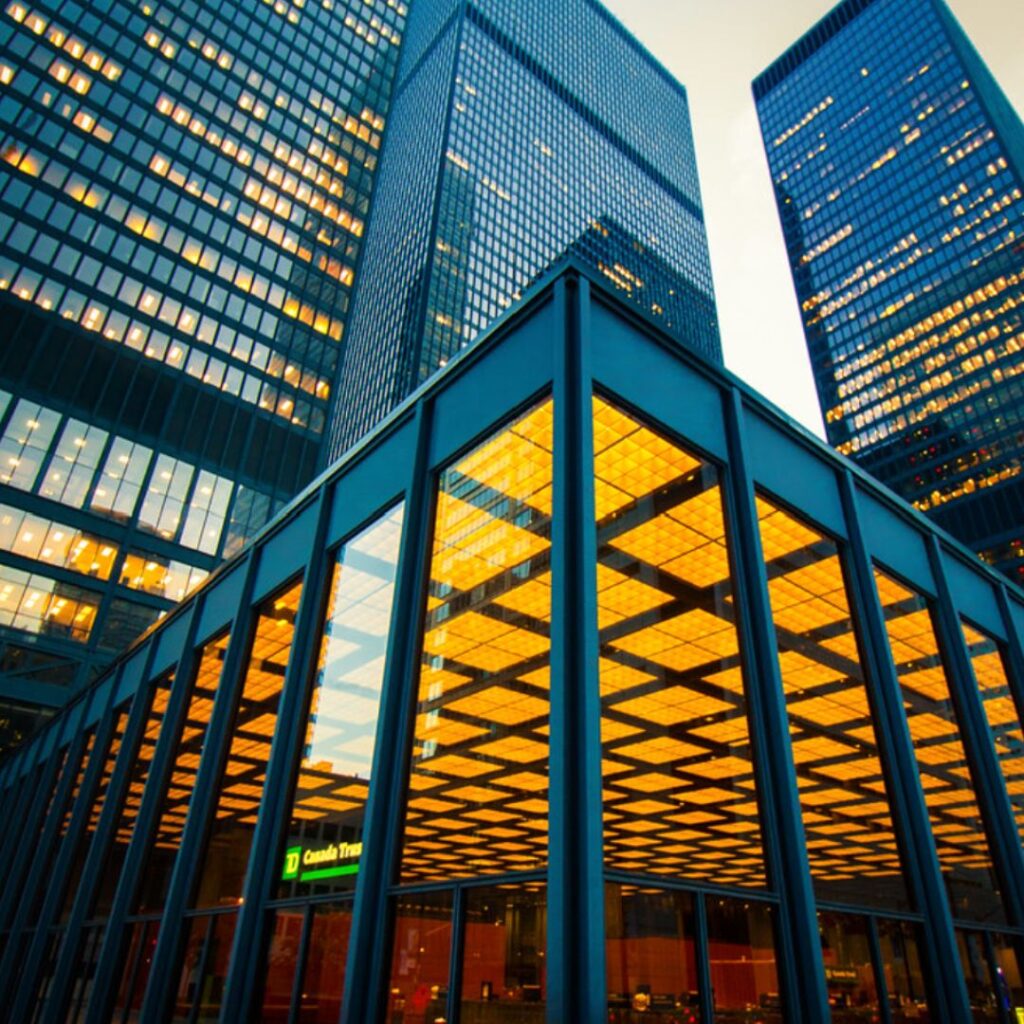Toronto Dominion Centre
By Bruce Bell, Toronto Historian
When the first phase of the Toronto Dominion Centre opened in 1967, our city was a much different place than it is now.
What is so fascinating about the TD Centre is that it looks pretty much the same as it did when it first opened, when elevator etiquette required a man to remove his hat but not put out his cigarette.
What makes the TD Centre a modern masterpiece of art and design is down to the genius who created it, Ludwig Mies van der Rohe a German-born American architect (March 27, 1886 to August 17, 1969) Mies for short (pronounced Mees).
The TD Centre was the brainchild of Allen Lambert, former President and Chairman of the Board of the TD Bank and t Phyllis Lambert (his sister-in-law and daughter of Seagram’s Chairman Samuel Bronfman), who suggested Mies as design consultant to the architects, John B. Parkin and Associates and Bregman & Hamann with Fairview Corporation as the developer.
Even though, as law states, a Canadian architectural firm had to be signed on as lead architect, the TD Centre is all Mies.
Phyllis Lambert had previously in 1958 hired Mies in collaboration with American-born Philip Johnson to build the Seagram Building on Park Ave in New York, and just like the TD did here, changed the skyline of Manhattan forever.

Some modernist architects, like Mies, could appreciate the merits of early 20th century architecture.
But he believed that less was more, and if constructed using only the best materials then modern buildings sans exterior decoration and stripped down to their bare bones could hold their own as the next wave of architecture.
And that’s why I love the TD Centre; its public spaces still have the all the original furniture and light switch covers that Mies had designed (however, his elevator ashtrays have since been removed). Another lasting component of Mies’s fearless vision is that fresh cut yellow daisies in clear glass round vases are still placed throughout the main banking hall, with the same arrangement done on the 54th floor in the CEO’s office.
He wanted his buildings to be organic, with a natural link between the customers on the banking floor and the big boss man upstairs. As Mies often stated, God is in the detail.
Toronto now had the largest, tallest, and biggest corporate office space in all of Canada, designed by the coolest architect in the world. However, over 100 buildings were demolished to create this urban paradise, including one of the most spectacular buildings in our history, the Bank of Toronto, designed in 1912 by the illustrious architectural firm Carrère and Hastings of New York City, who were the Mies van der Rohe of their day.
Bits and pieces of the majestic Bank of Toronto can still be seen at Guildwood Park, as well as a scale model on display in the present TD Centre banking hall.
Mies also designed a 690-seat movie theatre (only 1 of 2 theatres he ever built in his career) that was once part of the TD Centre’s lower concourse. It was abandoned in 1978.
Some say the TD Centre casts too much of a dark shadow over the downtown core, and with the wind tunnel it created its hard to maneuver through it’s canyons on all but the calmest days.
Yet it floats on a human scale with its massive black-steel and glass grouping of five towers (two more towers were added to the original three after Mies’s death) all surrounding a plaza named Oscar Peterson Square in 2004, and a grass pasture complete with seven full size bronze cows designed by Joe Fafard.
When the TD Centre opened, it created breathtaking vistas both seen from afar and up close and became the symbol of the new Toronto, wealthy, powerful and full of promise.
Noted Toronto historian, Bruce Bell specializes in in-depth private walking tours of Old Toronto.
Book a walking tour or seminar today! www.brucebelltours.ca | [email protected] | 647.393.8687
